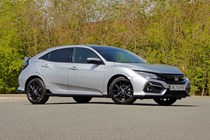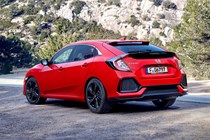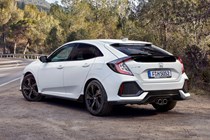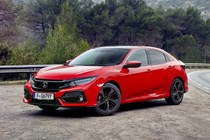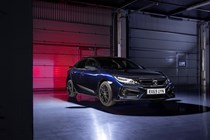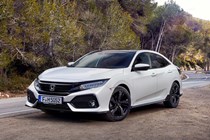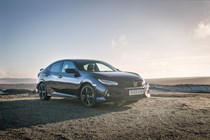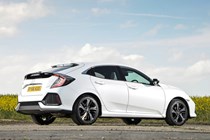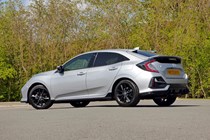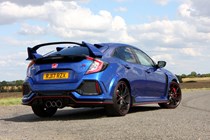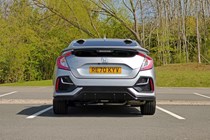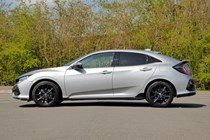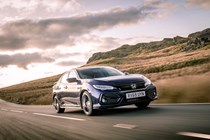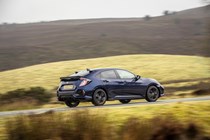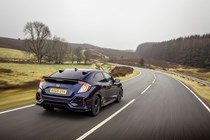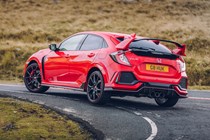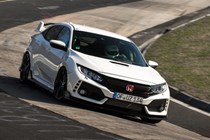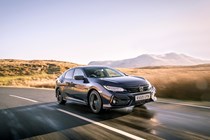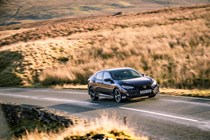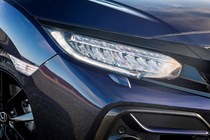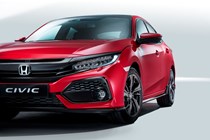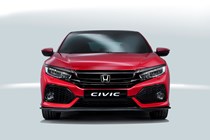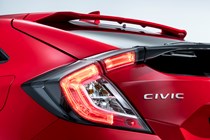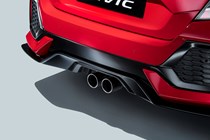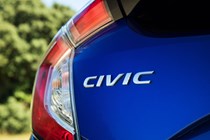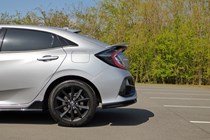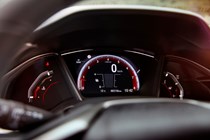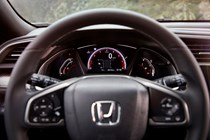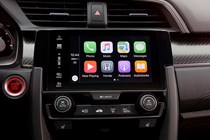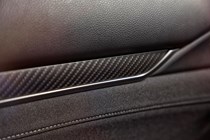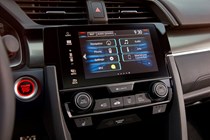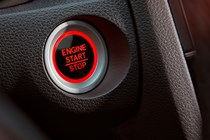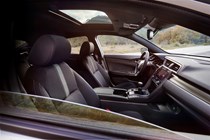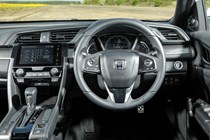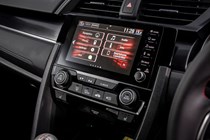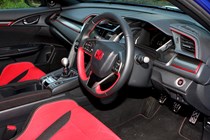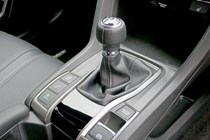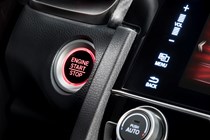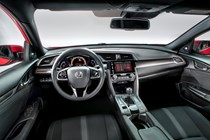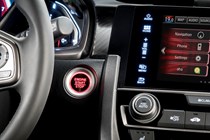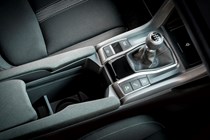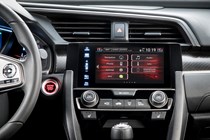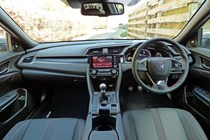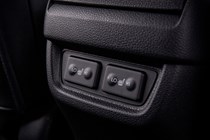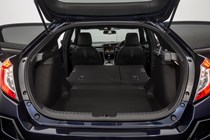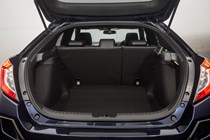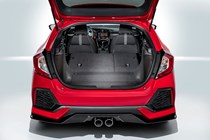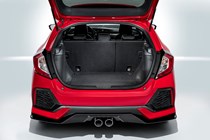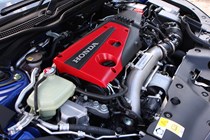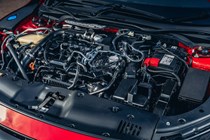
Honda Civic Hatchback (2017-2022) engines, drive and performance
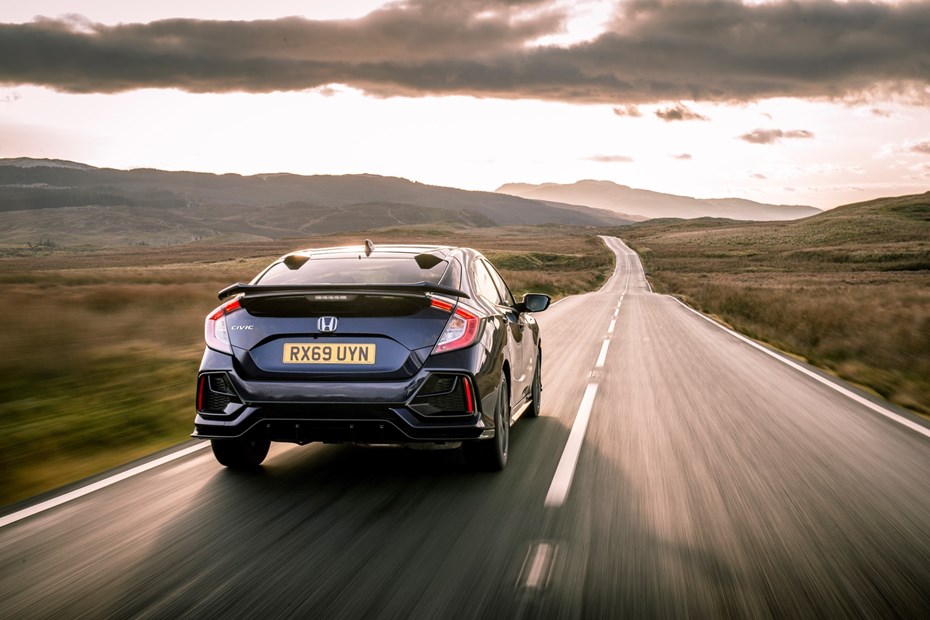
- Three petrol engines, diesel no longer available
- All are strong performers
- Automatic gearbox available on both core units
What engine options are there?
With two core petrol-powered engines to choose from, you might be forgiven for thinking that the Mk10 Civic’s range is lacking. There isn’t a hybrid or electric model on offer, and the diesel didn’t last the entire model cycle.
That said, if you are simply looking for a conventional petrol engine that balances power and reasonable running costs, both of these are more than up to the task. This is thanks to its combined use of a turbocharger and clever VTEC variable valve system, which tweaks the engine’s performance to prioritise economy or power.
You have the choice of a six speed manual gearbox or a CVT automatic on both as well.
| Engine | Power and torque |
0-62mph time |
Top speed |
| 1.0-litre manual | 126hp, 200Nm | 10.8-11.2secs | 127mph |
| 1.0-litre CVT auto | 126hp, 180Nm | 10.7-10.9secs | 124mph |
| 1.5-litre manual | 182hp, 240Nm | 8.2secs | 137mph |
| 1.5-litre CVT auto | 182hp, 220Nm | 8.3secs | 124mph |
Both of these Honda Civic engines certainly put the disappointing performance of its 1.4- and 1.8-litre predecessors in the shade, but the smaller of the two current powerplants is a genuine star.
The 1.0-litre three-cylinder engine is a potent little thing. You get a lot of bang for your buck, despite its tiny size. as this eager engine belies its tiny capacity.
It feels big-hearted, but the engine does require winding up to get the best out of it – especially on hills or when fully loaded. If you let the engine stray below 2,000rpm, it can otherwise feel lacking (especially compared with rival turbodiesels) when asked to pull from low revs. It’s a minor niggle in day-to-day driving, but it does feel a little old fashioned.
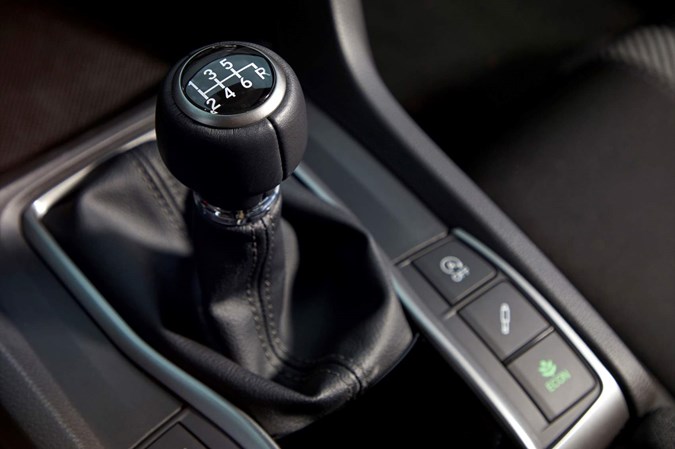
This means having to use the manual gearbox more often, which, thankfully, is slick and slots into place precisely. It could do with a little more resistance to help you feel more involved, but it’s much better to use than most.
It certainly feels strong compared with the brilliant 125hp EcoBoost unit Ford puts in the Focus, although the newer 130hp 1.5-litre, four-cylinder engine in the SEAT Leon and Volkswagen Golf is smoother in terms of refinement and power delivery, while remaining just as eager and economical.
It has a slightly gruff, off-beat sound we’ve come to associate with three-cylinder motors, but you’re mainly aware of it when you’re accelerating hard. Once it’s cruising, it settles down to a muted hum.
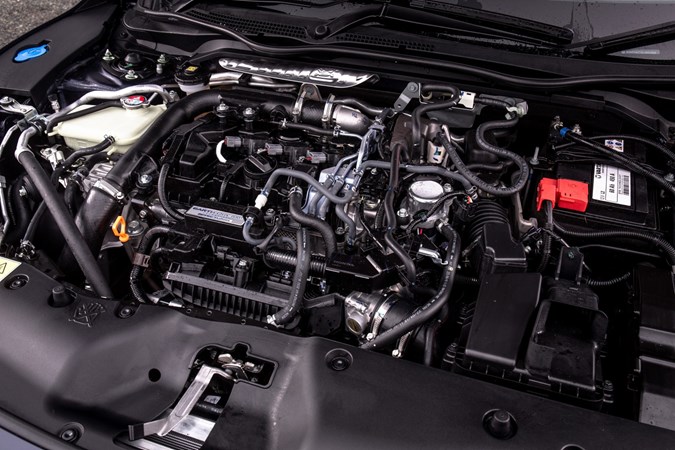
The 1.5-litre four-cylinder 182hp VTEC Turbo is also powerful for its comparatively small engine capacity. Fastest of the non-Type R Civics, it feels like a much larger power unit.
The performance figures back this up with a strong mid-range surge. It doesn’t particularly enjoy being revved, however, feeling strained if you hold onto gears for too long and it could sound a little more interesting, despite the twin centre exhausts. We love the gearchange quality and pedal weight though, and it feels smoother than the smaller engine in traffic.
Automatic gearbox option
You might be forgiven for thinking that a 1.0-litre CVT automatic sounds like a recipe for daily misery, but it’s actually a real gem. Honda has done great work retuning its CVT gearbox to work efficiently by keeping the engine spinning at its sweetest point half-way up the rev range.
Keep it out of Sport Mode and it will run at seriously low revs when you don’t need acceleration, but on a light throttle, it steps through a series of simulated ratios – acting like a conventional seven-speed auto.
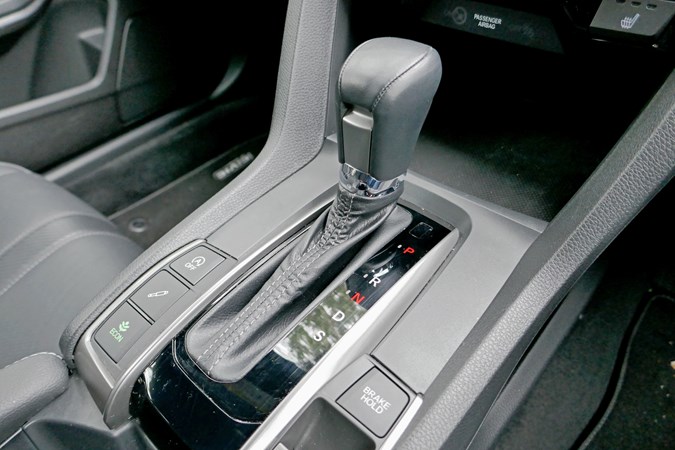
If you want performance, put it in Sport and use the steering wheel-mounted paddle-shifters. Here, it responds beautifully. There are no appreciable differences in performance and fuel consumption figures, either.
Overall, the CVT version works well as a package, and in daily use, it’s actually preferable to the six-speed manual version because it negates the small ‘hole’ in the engine’s power delivery, providing a sharp pick-up from low revs before tailing off at higher engine speeds – almost a reverse in character to the manual, if you like.
The 1.5-litre engine is also available in CVT automatic form, which also works well, but bizarrely, its maximum speed drops by a significant margin according to Honda’s own figures.
Honda Civic 1.6-litre i-DTEC diesel
The Civic line-up expanded in early 2018 with the addition of a 1.6-litre i-DTEC diesel engine to the range. This was short-lived though and was taken off sale by the 2019 facelift.
Packing 120hp and 300Nm of torque and available in S, SE, SR and EX models, it’s a smooth performer with impressively low claimed running costs.
It’ll go from 0-62mph in 10.5 seconds and on to a top speed of 125mph. It doesn’t feel overly rapid, however the way its power is delivered is very smooth indeed.
The 300Nm torque figure helps with strong in-gear acceleration, and if you need to drop a gear or two, the six-speed manual gearbox is as slick as it is in any other Civic.
In fact, it feels an even easier version to drive than the turbocharged petrols, avoiding any kind of jerkiness that we’ve experienced in the 1.0-litre manual. It never feels overwhelmingly urgent, but it feels perfectly judged for the Civic and will suit buyers down to the ground – especially if you spend a lot of time on the motorway or regularly load the car up.
How does it handle?
- New suspension layout results in excellent handling
- Now up there with the class leaders
- Safe and stable, but also enjoyable to drive
Given that it has an all-new body and running gear, and the styling carries nothing over from previous Honda Civics, it seems fitting that the new car doesn’t drive like the old one.
The first thing you notice when you get onto twisting roads is how much grip and poise there is in corners – and how well damped it is on less than perfect roads.
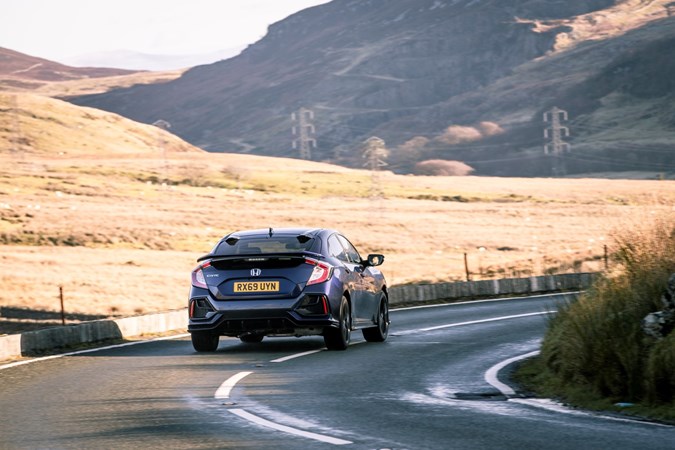
It’s not perfect, though, as the rear end is a little unsettled like on lower-spec models of the Volkswagen Golf or Ford Focus on the motorway, but this changes when the car is carrying rear passengers.
The steering weight is a little on the lighter side and continues to lack the final degree of road feel, but remains accurate and responsive enough to be fun. The Civic is perfectly good as a family car, but more than capable enough for keener drivers. Scratch a little deeper and the Civic can be playful enough to entertain those on a spirited drive.
Those looking for a halfway house between the hot Type R and regular Civics can opt for the EX Sport Line. This is the top-of-the-range Civic, and comes with a sublte body kit and rear spoiler, plus adaptive dampers. It’s largely a visual makeover, though, and despite the ability to stiffen up the suspension in Dynamic mode, you’ll notice the slightly jittery ride quality more than the slight improvement in handling characteristics – which says a lot about how good the standard setup is.


